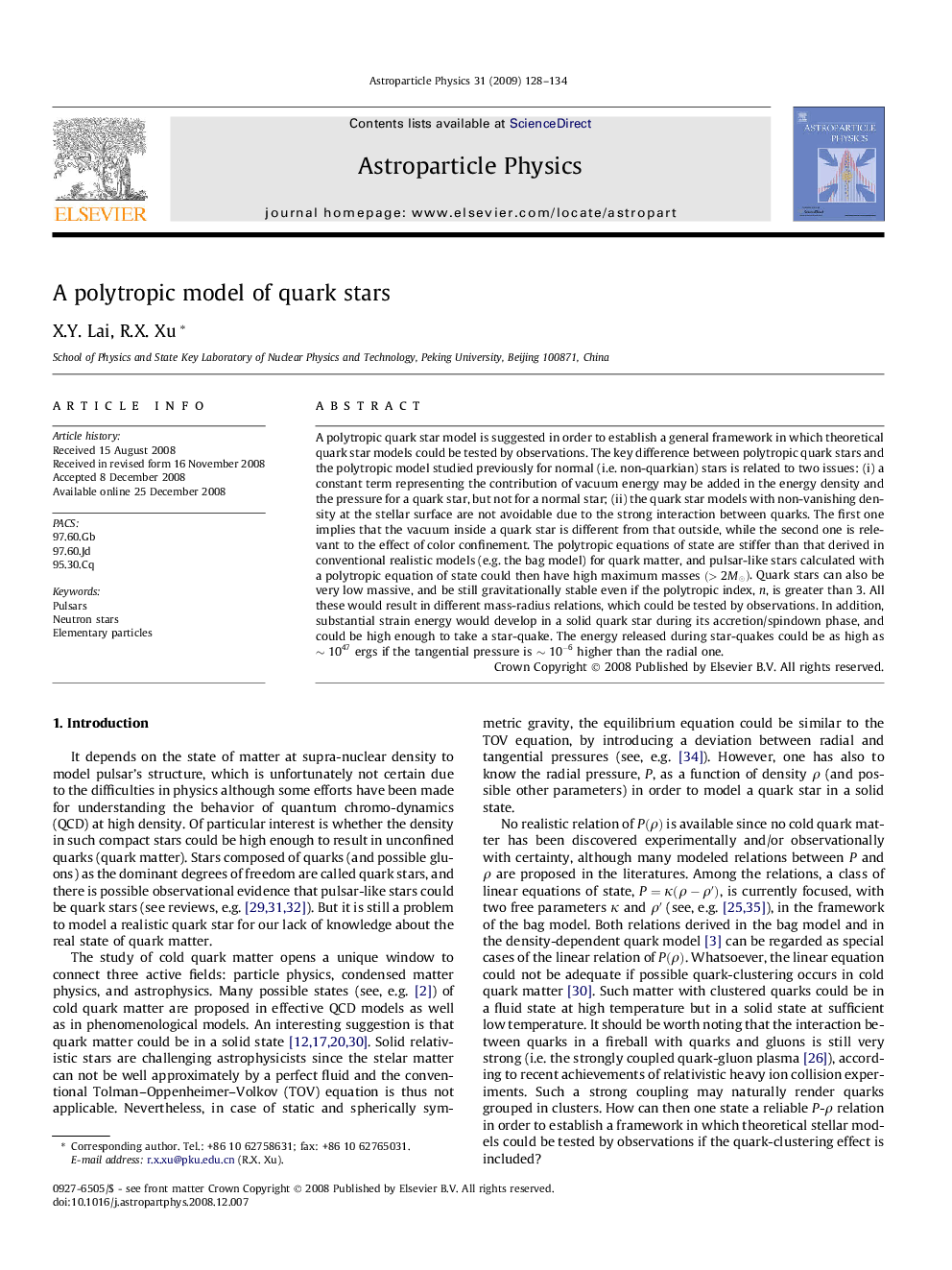| کد مقاله | کد نشریه | سال انتشار | مقاله انگلیسی | نسخه تمام متن |
|---|---|---|---|---|
| 1771392 | 1020759 | 2009 | 7 صفحه PDF | دانلود رایگان |

A polytropic quark star model is suggested in order to establish a general framework in which theoretical quark star models could be tested by observations. The key difference between polytropic quark stars and the polytropic model studied previously for normal (i.e. non-quarkian) stars is related to two issues: (i) a constant term representing the contribution of vacuum energy may be added in the energy density and the pressure for a quark star, but not for a normal star; (ii) the quark star models with non-vanishing density at the stellar surface are not avoidable due to the strong interaction between quarks. The first one implies that the vacuum inside a quark star is different from that outside, while the second one is relevant to the effect of color confinement. The polytropic equations of state are stiffer than that derived in conventional realistic models (e.g. the bag model) for quark matter, and pulsar-like stars calculated with a polytropic equation of state could then have high maximum masses (>2M⊙)(>2M⊙). Quark stars can also be very low massive, and be still gravitationally stable even if the polytropic index, n , is greater than 3. All these would result in different mass-radius relations, which could be tested by observations. In addition, substantial strain energy would develop in a solid quark star during its accretion/spindown phase, and could be high enough to take a star-quake. The energy released during star-quakes could be as high as ∼1047∼1047 ergs if the tangential pressure is ∼10-6∼10-6 higher than the radial one.
Journal: Astroparticle Physics - Volume 31, Issue 2, March 2009, Pages 128–134